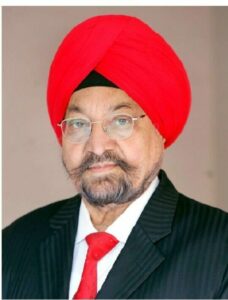
The United States is often hailed as the world’s preeminent democracy, a beacon of human rights, equality, and justice. It is a nation that prides itself on standing for the highest democratic ideals—principles that include gender equality, a cornerstone of any just society. Yet, despite this reputation and the progress made in various fields, the United States has never elected a woman as President. This reality raises important questions about gender dynamics in American politics and the broader implications for gender equality in a country that claims to be a leader in democratic values.
A Global Perspective on Female Leadership
To understand the significance of this issue, it is instructive to look at the progress made by other nations in electing women to the highest political offices. India, for instance, became independent in 1947 and a republic in 1950. In just a few decades of independence, India saw its first woman Prime Minister, Indira Gandhi, who led the nation through critical periods of its history. Her leadership not only marked a significant achievement for women in India but also demonstrated to the world that women could lead large, diverse democracies with competence and authority.
Similarly, Sri Lanka, another South Asian nation, elected Sirimavo Bandaranaike as the world’s first female Prime Minister in 1960. Her leadership set a precedent in a region that is often characterized by patriarchal structures, proving that women could break through the highest glass ceilings in politics.
In the Middle East, Israel elected Golda Meir as Prime Minister in 1969, making her one of the earliest women to lead a modern nation-state. Her tenure as Prime Minister during a turbulent period in Israel’s history further underscored the capability of women to govern effectively in challenging circumstances.
Europe, too, has seen several women rise to the highest offices of leadership. Margaret Thatcher, who served as Prime Minister of the United Kingdom from 1979 to 1990, was a transformative figure in British and global politics. Known as the “Iron Lady,” Thatcher’s strong leadership style and firm policies left an indelible mark on the UK and the world.
Other nations across Europe and beyond have followed suit, with women leaders such as Angela Merkel of Germany, Jacinda Ardern of New Zealand, and Ellen Johnson Sirleaf of Liberia, among others, taking on the mantle of leadership in their respective countries. These examples highlight that the election of women to the highest offices is not only possible but has been achieved in a variety of political, cultural, and historical contexts.
The American Anomaly
Given this global trend, it is perplexing that the United States, a nation with a rich history of democratic principles and gender equality movements, has yet to elect a woman President. This situation is even more puzzling when one considers that women constitute a larger share of the electorate in the United States than men. According to data from recent elections, more women vote in U.S. elections than men, yet this numerical advantage has not translated into a woman holding the nation’s highest office.
One might argue that this is not a matter of outright gender discrimination but rather a result of the complex dynamics of American electoral politics. However, the absence of a woman President over more than two centuries of American history suggests that deeper issues may be at play. The fact that the United States has never had a woman President raises questions about whether gender biases, both overt and subtle, continue to influence voter behavior and the political process.
Gender Bias in American Politics
Gender bias in American politics can manifest in various ways. One of the most significant barriers to women achieving the presidency is the enduring stereotype that men are more suited to leadership roles, particularly in areas such as national security and economic management. These stereotypes are often reinforced by media portrayals and public discourse, which can shape voter perceptions and preferences.
Moreover, women candidates for the presidency have often faced a double standard in terms of their qualifications and demeanor. Female candidates are frequently scrutinized more harshly than their male counterparts, with their competence, likability, and even appearance subjected to a level of scrutiny that men rarely experience. This double standard can discourage women from running for office or undermine their campaigns when they do.
Another factor to consider is the structure of the American political system itself. The two-party system, the electoral college, and the primary process all create barriers that can be difficult for any candidate to overcome, but these barriers can be particularly challenging for women. For instance, the need to secure party nominations through a primary process that often favors candidates with established networks and fundraising abilities can disadvantage women, who may have less access to these resources due to systemic gender inequalities.
The Need for Change
Despite these challenges, women in the United States have proven time and again that they are fully capable of leading in every sector, from business to academia to government. Women have served as governors, senators, and representatives, and have held key cabinet positions and roles in international diplomacy. Their contributions have been instrumental in shaping the nation’s policies and its future.
Yet, the presidency has remained elusive. This is not just a missed opportunity for the individual women who have run for the office; it is a missed opportunity for the nation as a whole. The election of a woman President would send a powerful message about the United States’ commitment to gender equality and would serve as an inspiration to future generations of women leaders.
As we look to the future, it is essential that women in the United States continue to assert their rights and demand equal representation at all levels of government. The question is not whether a woman can become President of the United States, but when. With more women than ever before participating in the political process, running for office, and voting, the momentum is building. It is only a matter of time before the United States elects its first woman President.
It is time for American women—and all Americans who believe in equality—to emphatically demand the election of a woman to the presidency. The Indian Panorama would be eager to hear from our readers on this pressing issue. What do you think? Is it time for the United States to finally elect a woman President?





Prof Saluja, thank you for your analysis of why America has not had a female President. I have not seen this kind of analysis even in the mainstream media. You hit the nail on the head with this comment: “One of the most significant barriers to women achieving the presidency is the enduring stereotype that men are more suited to leadership roles, particularly in areas such as national security and economic management.”
The Indian community members I speak to now are enthusiastic about voting for Kamala Harris, but many still crib about the illegal immigrants and the handouts they get from a Democrat administration.